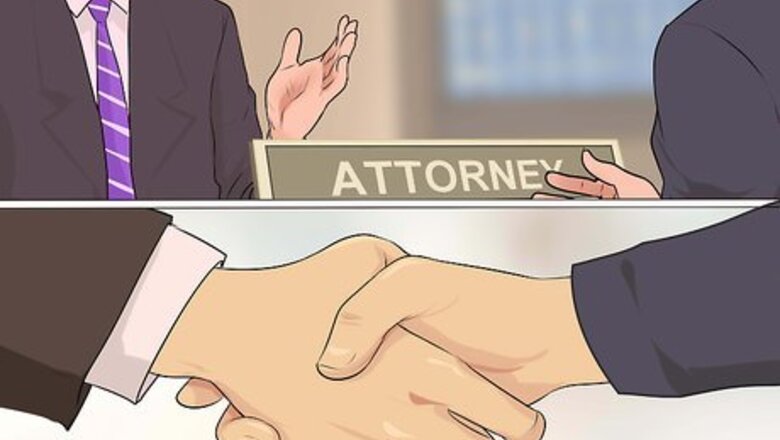
views
Preparing Your Case
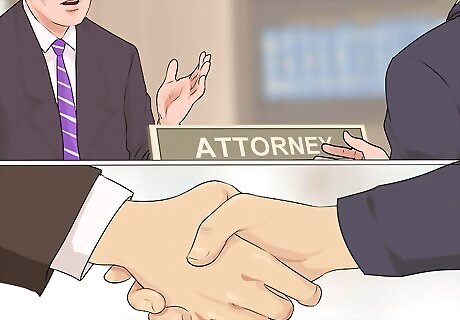
Consider hiring an attorney. Law can be very confusing, and one seemingly insignificant item can change the course of your case. If you can afford to hire a full-service attorney, that is usually best. If you are suing as a business, you must be represented by an attorney. Even if you can’t afford a full service attorney, consider hiring one for unbundled services (only specific services that you need). Unbundled services can include: Preparing documents Giving legal advice Teaching you the law as it applies to your case

Decide what type of court you will file in. Before you locate the appropriate court, you will need to determine which type of court you will file in. In New York City, you generally have the option of filing in the New York City Civil Court, the New York City Supreme Court, or federal court. If you want to file in state court and the value of your case is $25,000 or less, you will file in one of the New York City Civil Courts. This is the most common court in New York City and will be the focus of the rest of the article. If you want to file in state court but the value of your case is expected to exceed $25,000, you will need to file your case in one of the five Supreme Court locations in New York City (Bronx, Brooklyn, Manhattan, Queens, or Staten Island). If you are filing a case that arises under federal law, or if you are suing a citizen of another state, you may be able to file in a United States District Court in New York City. While there are four federal district courts in New York State, the United States District Court for the Eastern District of New York and the Southern District of New York are the two main federal courts in New York City.
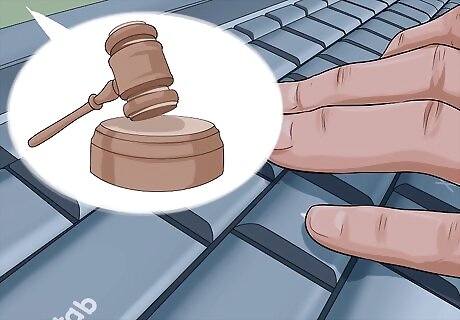
Locate the appropriate court (venue). You will file your case in the Civil Court in which the defendant lives or where the issue occurred. The venues available in New York City include: Manhattan Queens Staten Island Bronx Brooklyn
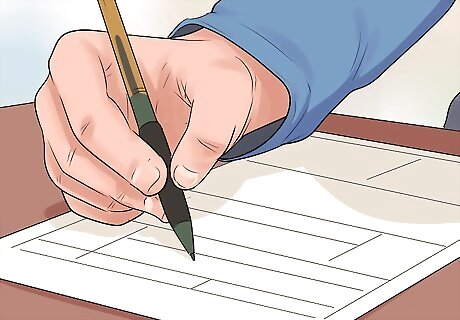
Complete the appropriate form. Apply for your summons and complaint by completing the Application for Summons available from the clerk or you can download the application from the link at http://www.courts.state.ny.us/courts/nyc/civil/startingCase.shtml. You will need to place the following information on the form: Your name and address The name and address of all defendants The reason for the claim (such as property damage, breach of contract, etc) The amount of money you are suing for (maximum $25,000) The date of the occurrence The place of the occurrence Any identifying numbers (such as license plates, receipt numbers, etc) Your signature The date signed
Filing and Serving Your Case
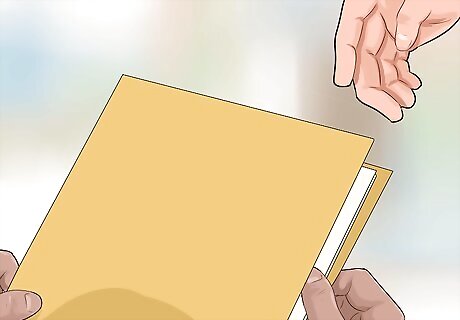
File your case. Take your application to the clerk of the court you located above. Give the clerk your original application. Pay the appropriate filing fee. The amount of the fee will depend on the type of claim you are initiating and will likely range between $15 and $100. Write down your index number Make enough copies of your Complaint and Summons for you and each defendant to have a copy.
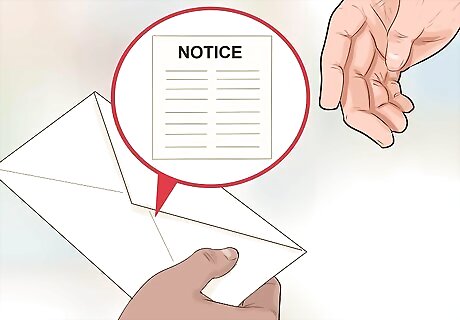
Serve the defendant. A copy of the Complaint and Summons must be served on each defendant. This can be done on any day except Sunday by anyone over age 18 and not a party to the action, including a private process server. Appropriate methods of service include: Handing the copies to the defendant personally Handing the copies to a person “of suitable age and discretion” at the defendant’s residence or business. An additional copy must be mailed in a plain envelope marked only “Personal and Confidential”. This must be mailed within 20 days. If service is unsuccessful after at least three attempts during and outside of working hours, the person making service can tape a copy of the complaint and summons to the door of the residence or place of business of the defendant. An additional copy must be mailed in a plain envelope marked only “Personal and Confidential. This must be mailed within 20 days. After service is completed, the person serving the documents must complete an Affidavit of Service.

Wait for the answer. The defendant has either 20 from the date of service if served by hand in person or 30 days from the date the Affidavit of Service is filed with the clerk if served in any other fashion. If the defendant does not answer in the appropriate time, you must mail an additional copy of the Complaint and Summons to the defendant. The envelope must be marked only “Personal and Confidential” and must contain no other markings other than addresses.
Managing Your Case

Gather your evidence. Read the New York Evidence Code and the Uniform Rules for the New York City Civil Court. It is worth hiring an attorney for assistance if you do not understand these rules. Some of the things these rules cover include: What types of documents are allowed and excluded Preliminary things that must be shown prior to entering evidence Types of questions that can and cannot be asked of witnesses

Attend your appearance. If the defendant answers, the court will provide you with a date for appearance. Arrive early and plan for difficulties parking or traffic issues coming in. If you are not there when your case is called, it may be dismissed. Speak to the judge, not the opposing party or opposing attorney. Do not interrupt the other party. If you want to dispute something the opposing party said, write it down and address it when it is your turn. If you believe the other party is saying something or presenting evidence that is not allowed by the rules, lodge an objection by saying, “Objection,” and waiting for the court to give further direction.
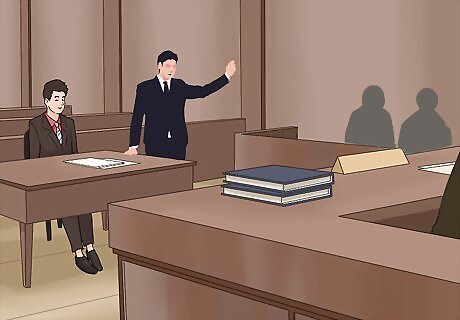
Present your case. The petitioner gets to go first. The order of presentation will probably go something like this: : Your opening statements (roadmap of what you will show the court) Your opponent’s opening statements Your presentation of evidence (witnesses and evidence) Your opponent’s presentation of evidence Your closing statements (summary of what was proven and how the law says those proofs suggest or require a ruling in your favor) Your opponent’s closing statements

Request an inquest. If the defendant did not answer, you must request an inquest after you have sent the additional notice under “Wait for an answer”. To request an inquest: Complete an Inquest Request Form at http://www.courts.state.ny.us/courts/nyc/civil/forms/requestforinquest.pdf Make a copy of the completed Inquest Request Form for your records File the original Inquest Request Form with the clerk of the court where you filed your case. You will be notified of your inquest date On your inquest date, you will present your case and evidence to the judge, who will determine whether you are legally entitled to the relief you requested. Follow the same steps as above.

Enter your judgment. The judgment received in court is not enforceable until it is entered by the clerk. To do this: Return to the clerk of the court where your case was filed and heard Bring all receipts for expenses you paid for prosecuting the case (such as filing and service fees) The clerk will calculate and enter the judgment Take your copy and store it in a safe place. You will likely need to make copies of it when trying to enforce the judgment.


















Comments
0 comment